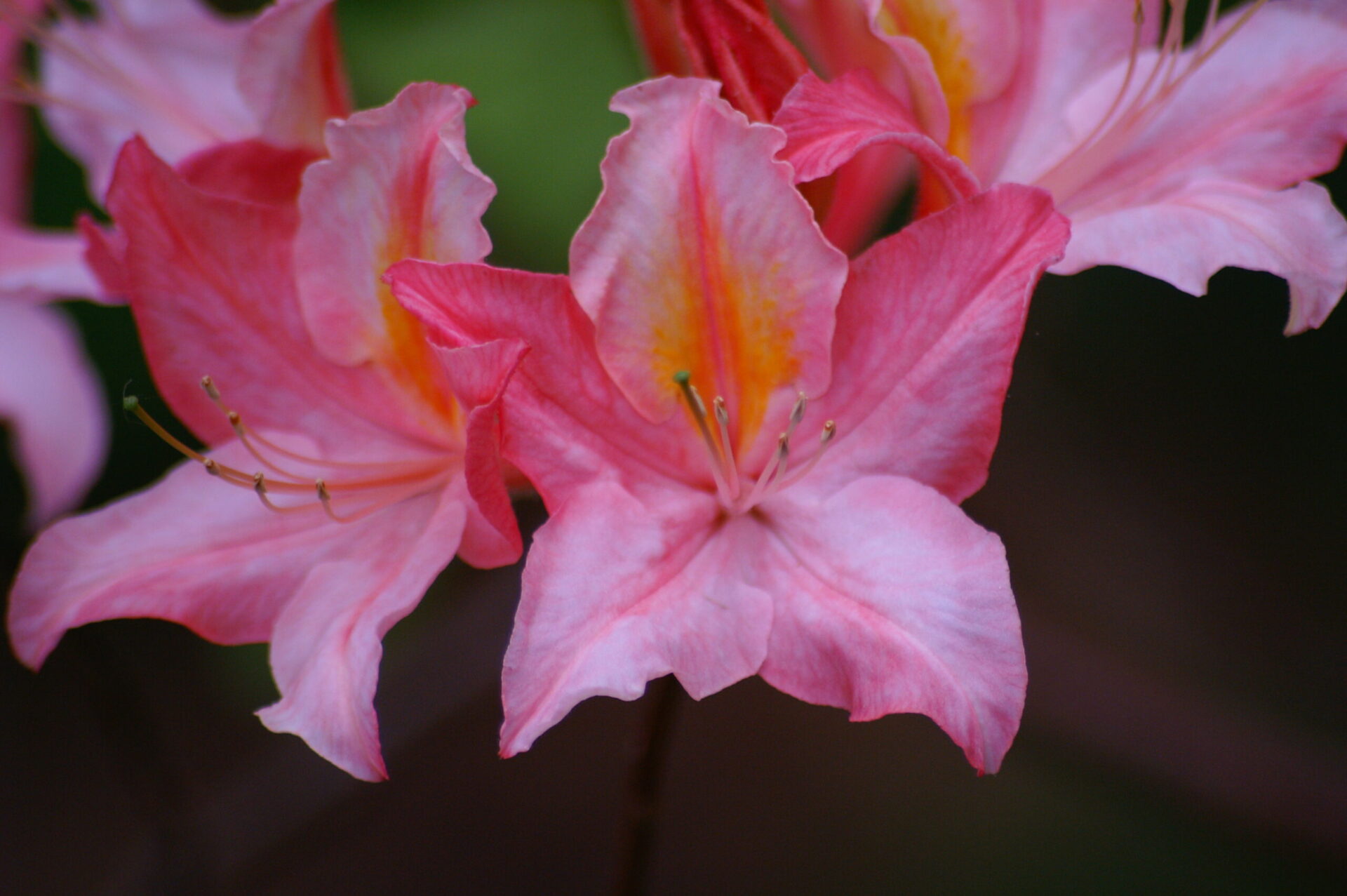Since opening the garden gates in 1976, Jenkins has built a remarkable collection of plants in the Ericaceae (heath) family, including rhododendrons, azaleas, blueberries, mountain laurels, and their many selections and hybrids. Within the family Ericaceae, Jenkins’ Kalmia (mountain laurel) and Rhododendron collections have garnered national accreditation by the American Public Gardens Association in partnership with the USDA in their Plant Collections Network. The accreditation of these two groups of plants is part of a continent-wide strategy to protect and preserve germplasm for taxonomic study, research, and breeding. Through this program, Jenkins collaborates with other participating institutions to identify gaps and duplications in these collections with an aim to provide a robust bank of germplasm (genetic material). With this accreditation, Jenkins preserves one of the most extensive collections of Rhododendron and Kalmia in all of North America.
With nearly 5,000 individual plants representing 1,500 taxa, the Ericaceae collection includes species and species selections of Rhododendron and Kalmia, some of which cannot be found anywhere else on the continent. Among these is an expanding collection of native azaleas that includes all of the eastern native species and dozens of selections and hybrids of those species. Jenkins also features complete, or nearly complete collections from the lifework of several regional rhododendron hybridizers. This vast collection of diverse plants is a safeguard against extinction for species, a living library of hybrids, and a rich palette of genetic material for future hybrids and crosses.
The success of these collections is a result of moist, well-drained, acidic soils, and ample rainfall during the growing season. Perhaps the most critical factor is simply the geographic location of Jenkins. Situated on the edge of zones 6b and 7 and having both north and south-facing slopes, Jenkins is able to display both evergreen azaleas, which grow best further south, and large leaf rhododendrons, which grow best further north.
